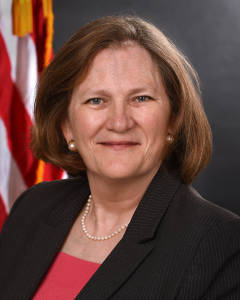Sheila Conley: Enterprise risk management properly implemented could strengthen decision making
Sheila Conley, deputy assistant secretary and deputy chief financial officer at the Department of Health and Human Services, is one of 50 new fellows for the...
Sheila Conley, deputy assistant secretary and deputy chief financial officer at the Department of Health and Human Services, is one of 50 new fellows for the National Academy of Public Administration.
How will you use your NAPA fellowship to promote/influence good government?

NAPA provides a unique opportunity to engage with a wide range of fellows, who are knowledgeable and experienced in government management and policy matters.
I am looking forward to tapping into the collective expertise and wisdom of the fellows to help inform and advance the business portfolio at HHS while also participating in efforts to address pressing governmentwide issues, such as reducing improper payments and enhancing program integrity. It is more important than ever to champion good government initiatives and best practices, many of which can be gleaned from NAPA reports and studies. Given the size and breadth of HHS, I plan to socialize NAPA’s work more broadly throughout the department to leverage NAPA’s valuable contributions and recommendations to improve HHS’ business and management environment and strengthen public accountability.
What’s the best management-related advice you ever received?
A great idea that lacks key ingredients for successful implementation will likely result in wasted resources, missed opportunities and frustrated personnel. We often focus on launching big initiatives without sufficient, sustained attention to proper execution. Key ingredients for success such as a sound strategic vision, implementation road map, adequate funding, skilled personnel, governance and rigorous project management are needed to accomplish important goals. This timeless and invaluable advice contributed to many recent achievements including deploying our business intelligence solution and transitioning our financial management system to the cloud.
What do you think is the most important change the government needs to make in the next 5 years?
Enterprise risk management (ERM) is an emerging discipline in the federal government that, if properly implemented could strengthen agency decision-making, performance and ability to accomplish mission goals. ERM challenges agencies to develop a risk aware culture, identify and prioritize enterprise risks and establish a risk appetite to help align agency resources with areas of greatest risk. Successful ERM implementation requires changes in organizational culture, behaviors and attitudes about risk at every level of the agency. While it is critical for ERM to be endorsed by agency officials “setting the tone at the top,” it is also important to assess the “mood in the middle” and “buzz at the base” of the organization to develop a sustainable program that aligns with the agency’s culture. Depending on an organization’s willingness and ability to enhance ERM, it could take five years or more to achieve the many benefits of a successful ERM program. However, ERM adoption is a change that is well-worth the investment to strengthen public administration and better serve the American people.
Copyright © 2025 Federal News Network. All rights reserved. This website is not intended for users located within the European Economic Area.
Jason Miller is executive editor of Federal News Network and directs news coverage on the people, policy and programs of the federal government.
Follow @jmillerWFED






